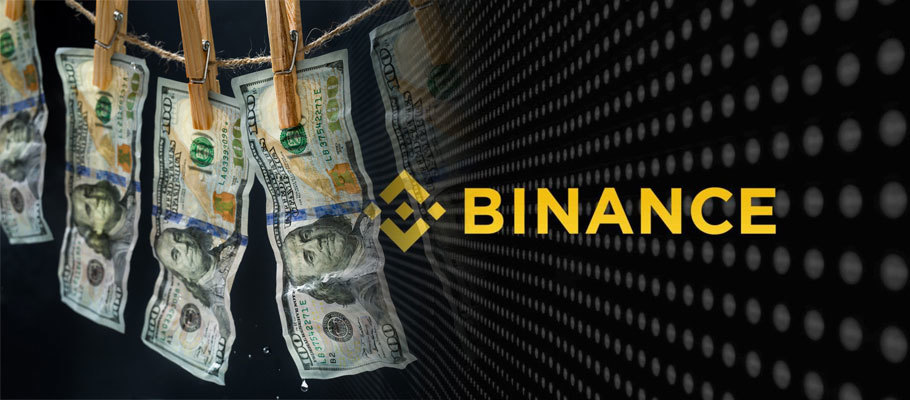
Published: June 8th, 2022
An investigation by Reuters that Binance, the world's largest crypto exchange by trading volume, was used to launder close to USD 2.33 billion in illicit funds between 2017 and 2021.
Journalists and analysts at the news agency based their findings on court records and interviews with financial regulators. They also partnered with two blockchain analytics firms, Crystal Blockchain and Chainalysis, to track illicit funds moving through the exchange.
The report quotes a Binance spokesperson, who said the exchange is in the process of building ‘the most rigorous cyber forensics team in the industry,’ the spokesperson said, which will ‘strengthen our ability to uncover illegal activity on the exchange.’
In a prepared statement published on the company website, Binance said it had received ‘a flood of support’ from its ‘law enforcement partners’ across the globe since Reuters published its findings on Monday.
The company describes the article as a ‘woefully misinformed’ opinion piece that uses outdated information from 2019 and ‘relies heavily on anonymous sources to establish a false narrative.’
Reuters claims to have uncovered the links between a number of hacks and breaches involving several crypto trading platforms, with Binance playing a part in each one. These include the hack of Slovakian crypto exchange Eterbase, criminal activities on a darknet marketplace called Hydra, and the Lazarus hacking collective which operates out of North Korea.
All have used Binance to execute various crypto transactions, Reuters says. Details of suspicious linkages to Binance follow below
Reuters estimates that Russian-language darknet marketplace Hydra used Binance to facilitate payments for illegal drugs sales worth close to USD 780 million.
Binance calls the accusation ‘inaccurate and overblown.’
In April, the US Justice Department announced it had been working with German police to seize Hydra's European servers. The Justice Department said Hydra was the source of 80 per cent of all darknet crypto transactions, pulling in more than USD 5 billion since 2016.
Hydra user posts seen by Reuters seemed to confirm that Binance was the site’s preferred payments platform due to its anonymity when creating an account.
In September 2020, Reuters says hackers from North Korea’s Lazarus group created a number of Binance user accounts and used them to launder USD 5.3 million in funds stolen from Slovakian cryptocurrency exchange Eterbase.
Because it asks only for minimal information when a new account is being created, Binance ‘doesn't have a clue about who is actually moving money through their exchange,’ Eterbase co-founder Robert Auxt told the news agency.
After it was hacked, Eterbase tried to work with Binance to get the stolen funds back, with Binance CEO Changpeng Zhao tweetng that the exchange would ‘do what it could to help’ Eterbase. However, emails shared with Reuters seem show that Binance dragged its feet on information and account data sharing unless law enforcement made a formal request.
The loss forced Eterbase to shut down its exchange and file for bankruptcy. The company lodged a criminal complaint with Slovakian authorities, who sent two requests to Binance for information. According to Reuters, the exchange supplied the details for 20 accounts with anonymous usernames.
Lazarus comes up again and again in the Reuters report. According to US law enforcement officials, the group is a state sponsored North Korean hacking unit that steals money to help fund North Korea's nuclear weapons program.
Figures from Chainalysis suggest that the group had stolen more than USD 1.75 billion in cryptocurrencies in the last two years alone.
Reuters reporters say Lazarus used Binance to launder money from the Eterbase hack, and from a 2021 breach of the Ronin sidechain that connects Axie Infinity to the Ethereum network. In that attack, Lazarus made off with more than USD 620 in crypto.
Back in December 2021, Binance has pulled its application for an operating license from Singapore’s financial service watchdog. The news was included in a wider announcement that the global crypto exchange plans to “refocus” strategically in Singapore and take advantage of the city state’s status as a blockchain innovation hub.
The company announcement said that the exchange’s Singaporean entity, Binance Asia Services, will now lead the firm’s mission to develop a global blockchain trading ecosystem.
Richard Teng, CEO of Binance Singapore, told The Straits Times that Singapore is 'already a humming fintech hub’ and that Binance will make further investments in the Southeast Asian region.
‘Singapore will become one of our lead R&D centres.’ As for current Singaporean traders on the platform, Teng said the company ‘always puts users first. We will help our users in Singapore transition their holdings to other third-party services or wallets’.
Binance CEO Changpeng Zhao (CZ) also tweeted that the exchange had made a large investment in regulated Singaporean exchange HGX the previous week, making its own application ‘largely redundant.’
While that may have been true, the exchange’s decision to end its pursuit of licensing marked another failed attempt to gain regulatory approval for its operations in a mature western financial service market.
Binance’s 2021 was plagued by a nightmare of regulatory missteps and arguments in Singapore and elsewhere.
The exchange found itself in conflict with the Monetary Authority of Singapore (MAS), Singapore’s national financial services watchdog.
In August 2021, Binance found itself temporarily exempt from the licensing requirements of Singapore’s Payment Services Act. This was due to its Singaporean entity offering financial services before the act took effect in January 2020.
The exception enabled MAS to consider license applications retroactively. Binance’s application, however, was never a dead certainty.
At time of writing, numbers from CoinMarketCap confirmed Binance as the largest crypto exchange, with USD 10.4 billion in spot trading volume and USD 41.6 billion in derivatives volume over the previous 24 hours.